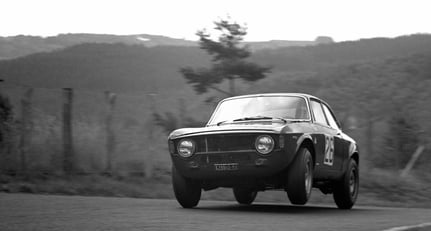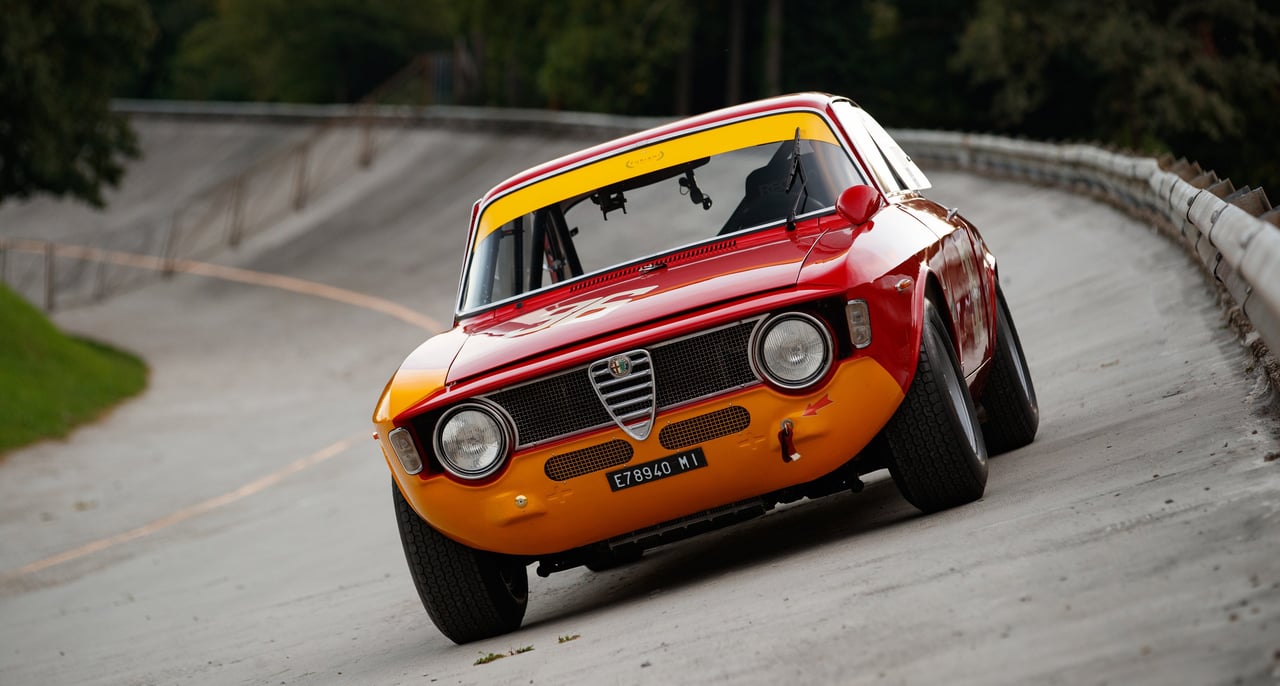
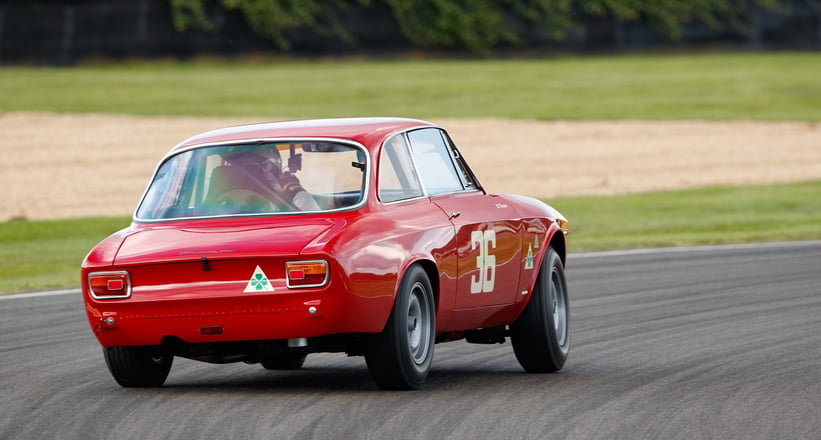
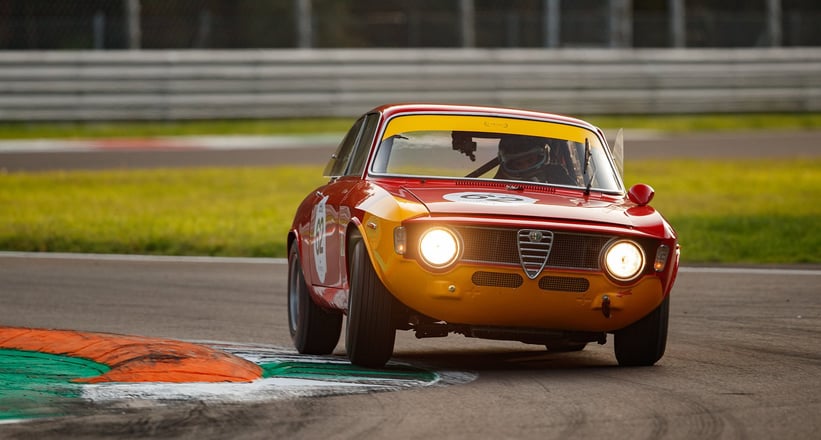
Technology has blunted and bloated the modern performance car. That may seem like an outrageous statement considering every week we hear of another 2000-plus horsepower hyper hoover, but invariably hiding behind that gargantuan power figure is an even larger number tied to one factor: weight. Don’t believe me? Take BMW’s shiny new 3.0 CSL for example. We all know CSL stands for Coupe, Sports and Light, but even after shedding 200 kilos, the new CSL still weighs a whopping 1600kgs; not exactly a featherweight, then. However, back in the 1960s, before computers and safety equipment swelled our performance cars, lightweight truly meant lightweight, and perhaps no racer of the era followed that mantra as strictly as the utterly bewildering Alfa Romeo Giulia Sprint GTA.
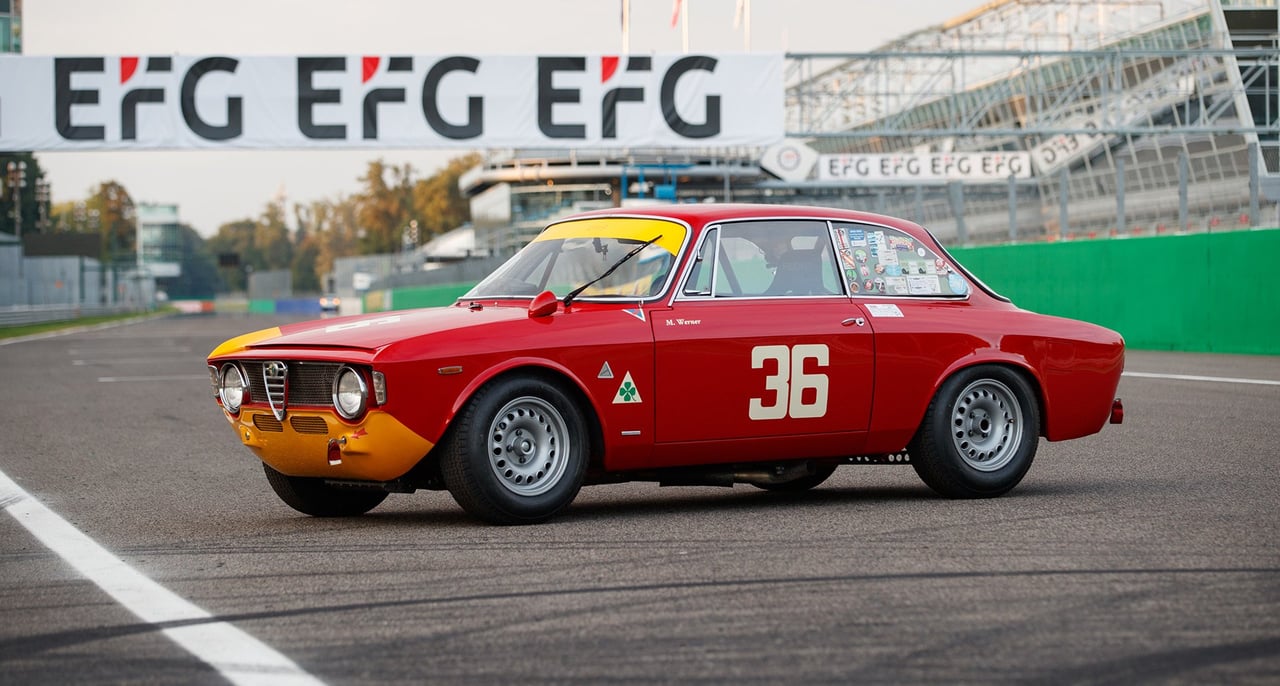
Before we sink our eyeballs into one of Alfa’s most beautiful race cars ever, it’s worth understanding how the car came to be in the first place, and it all starts with a little racing outfit called Autodelta. Founded in 1963 by a pair of former Ferrari engineers, Carlo Chiti and Ludovico Chizzola, Autodelta started as an independent company for race car development and preparation. However, thanks to Chiti’s good relationship with Alfa Romeo’s head honchos, Autodelta was soon entrusted with the marque’s race car development project. Autodelta became a publicly listed company in 1964, and after moving from Udine in the north-east of Italy to Milan (which prompted Chizzola to sell his shares), Alfa Romeo took over Autodelta in 1965, making them the official Alfa Romeo Works Racing Team and Chiti their managing director.
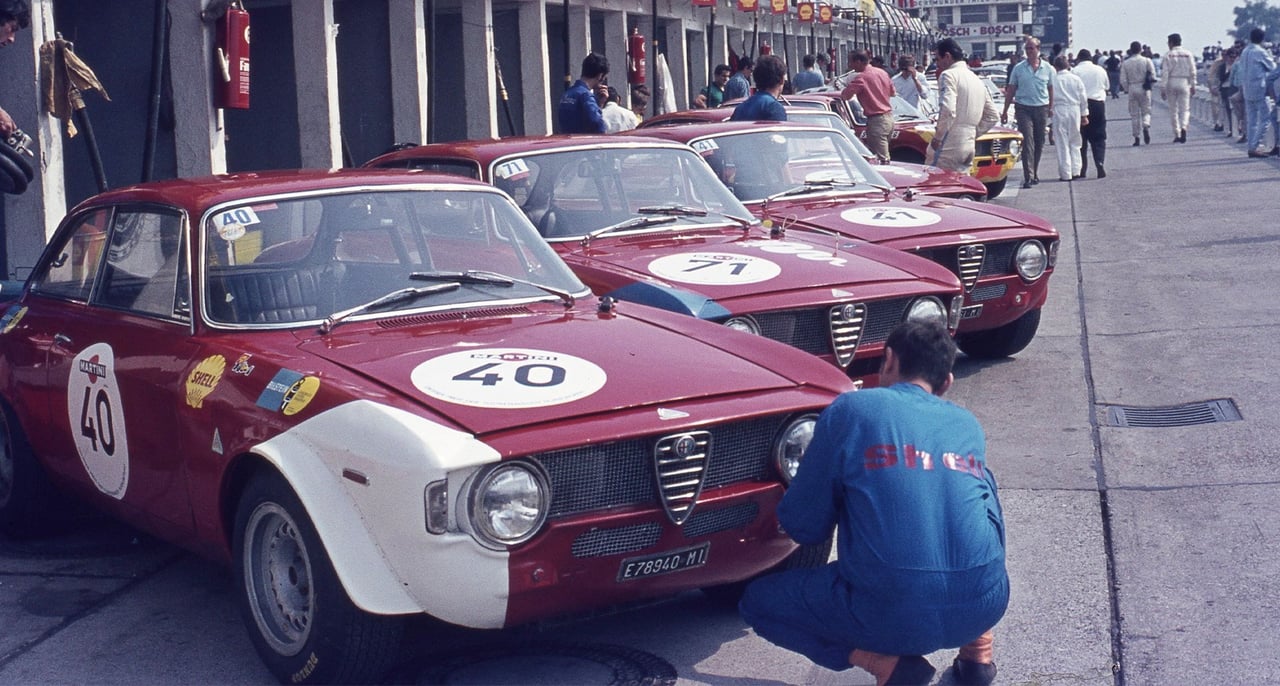
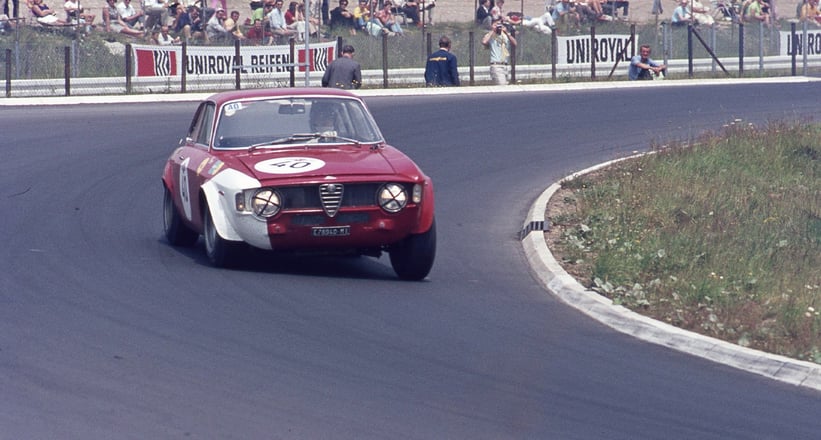
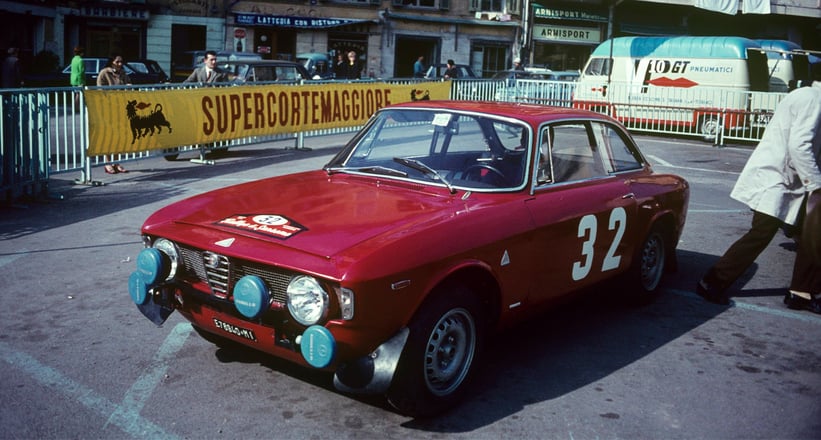
Initially, the focus was on developing the legendary TZ1 and TZ2 Zagato-bodied sports racing cars, but Alfa was keen to promote their road cars, so Autodelta got to work on a new sharpened version of the Giulia Sprint GT to compete in Group 2 of the European touring Car Series. In 1965 at the Autosalon in Amsterdam, the fruit of their labour was finally unveiled to the world: the Giulia Sprint Gran Turismo Alleggerita, or GTA, was born.
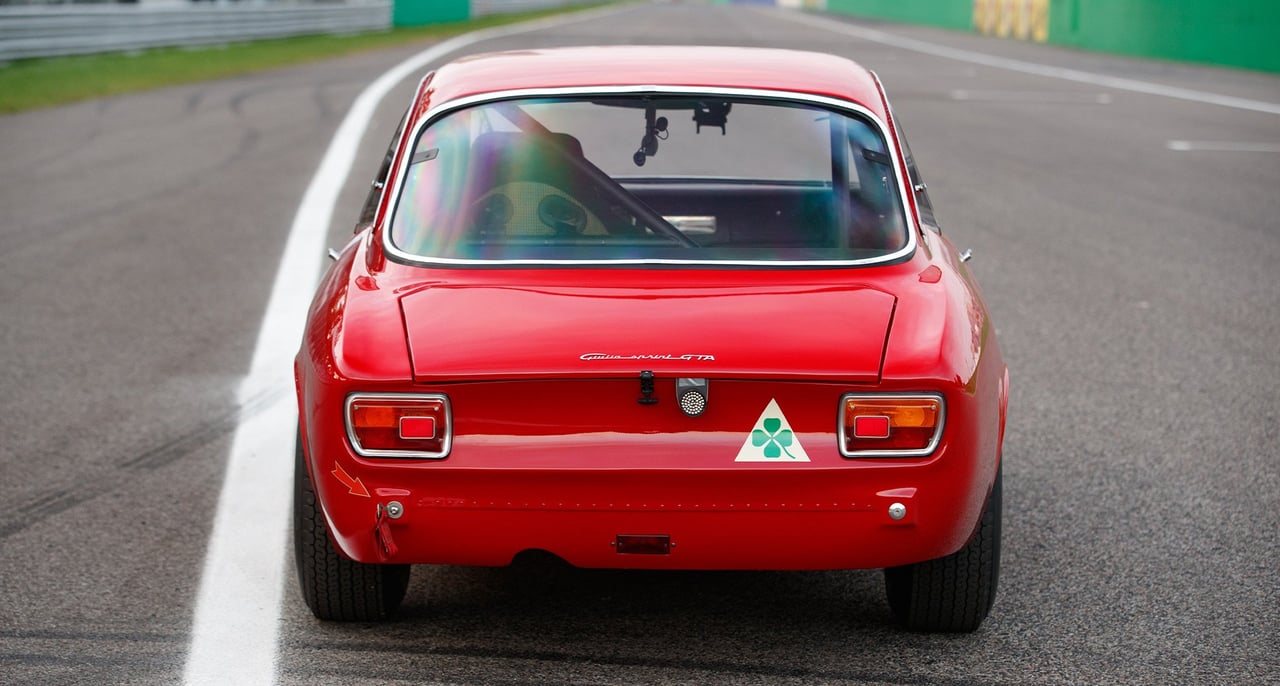
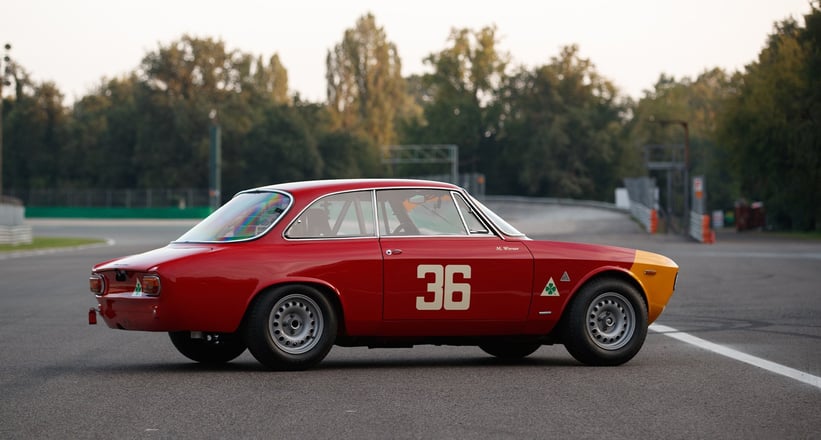
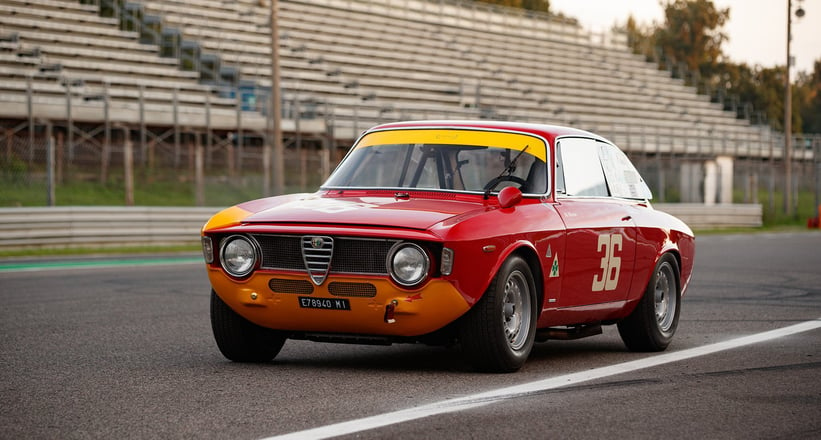
Simply put, the level of work that went into producing each Giulia Sprint GTA would be financially irresponsible in 2022. Chiti and his team left no stone unturned in creating their new light-footed track star, replacing almost every panel of the Sprint GT’s full steel body with lightweight aluminium alloy parts made from Peraluman. Their lightweighting effort was extensive, so you might want to take a deep breath before reading the next sentence. The complete outer body shell (aside from the sills), the outer door shells, the bonnet, the boot lid, the air deflector, the dashboard support panel, the spare tire tray, the rear inner panel, the number plate bracket, the bracket for the optional oil cooler, and the front floor panels (if specified) were given the Peraluman treatment. Combine all that with lightened interior trim, and the end result was a car we can only imagine had to be tied down on windy track days. All in, the Giulia Sprint GTA managed to outdo BMW’s modern-day 3.0 CSL, dropping 205 kilos from the standard car to achieve a dry weight of just 745kg.
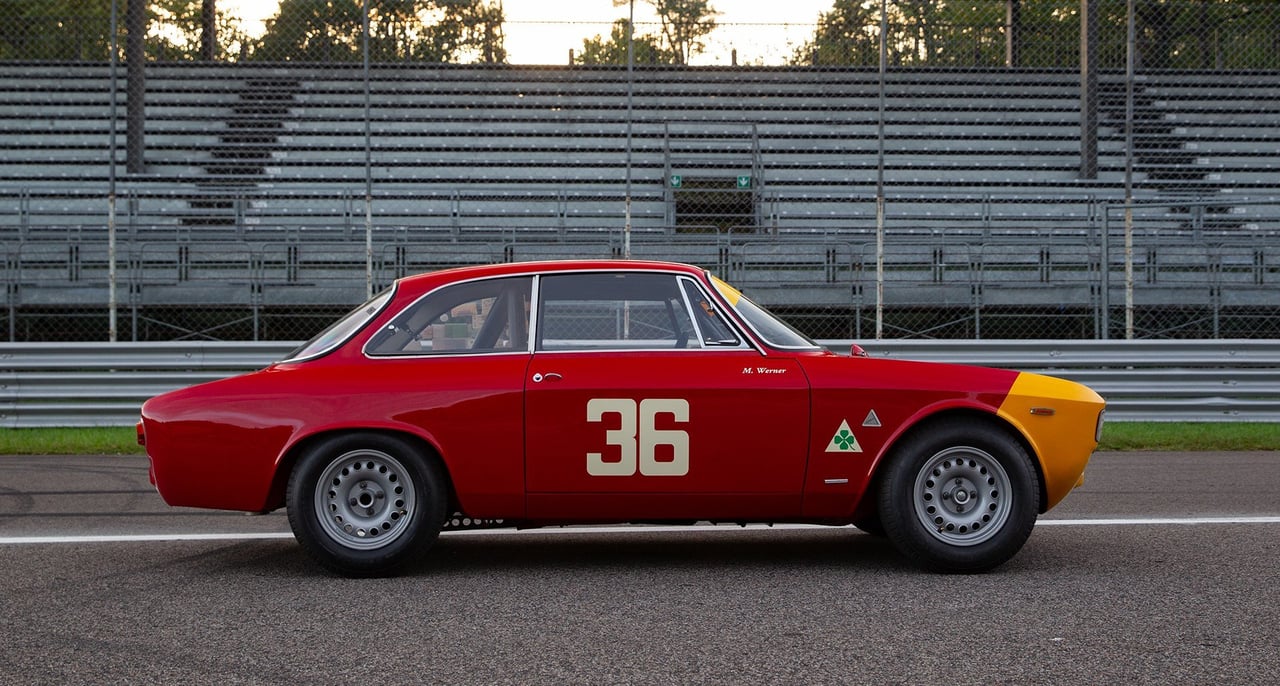
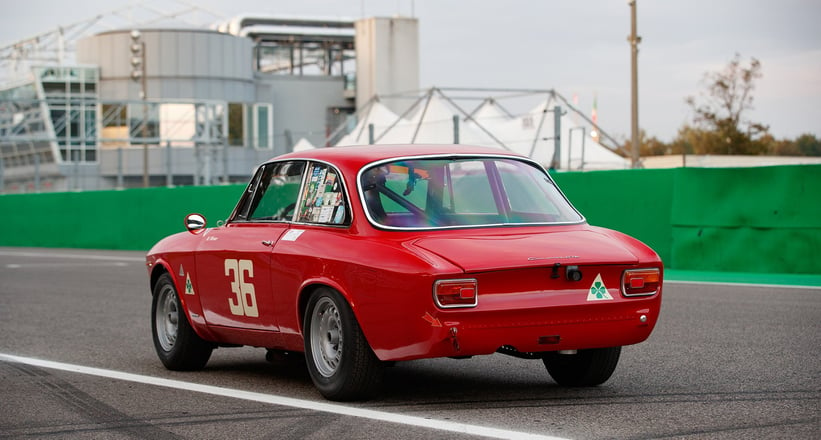
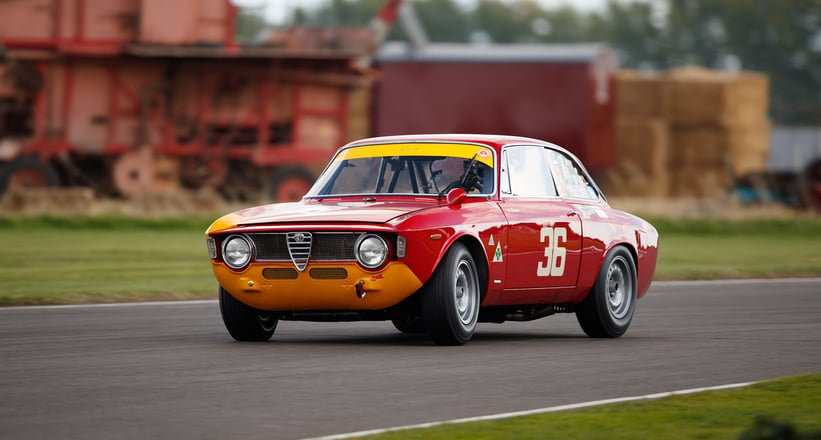
Even more unbelievably, after each GTA was built at Alfa Romeo’s Arese factory in northern Milan, they would be trucked off to Autodelta in Settimo Milanese to be completely disassembled and race-prepped. The Giulia Sprint GTA was powered by the proven 1570cc inline four-cylinder engine in a similar state of tune to that used in the TZ1 and TZ2. These engines featured aluminium blocks, while the valve cover, front engine cover, bell housing, rear gearbox cover, and oil sump were made from a magnesium alloy called Elektron. Once they arrived at Autodelta, every component of the engine was balanced and polished, while the flywheel was lightened and a special steel crankshaft was installed. Further modifications included the installation of an oil cooler and oil catch tank, a lowered oil pan, a lightweight windshield, and the fitting of a ZF limited slip differential made from a special steel. The final touches included a short exhaust system exiting on the left side under the driver’s door, and the relocation of the battery into the trunk. After their comprehensive overhaul, each GTA produced an impressive 160hp, which would later rise to around 175 horses.
However, all that cutting edge technology didn’t come cheap, and Autodelta’s transformation added a whopping 100% to the price tag of a standard Giulia Sprint GT. This meant that only Alfa’s most beloved clients were given the chance to purchase the GTA, making them incredibly rare as a result. All in, it’s estimated that between 325 and 500 GTAs were made in the first series, of which just 25 were original Autodelta factory cars built by Chiti and his team.
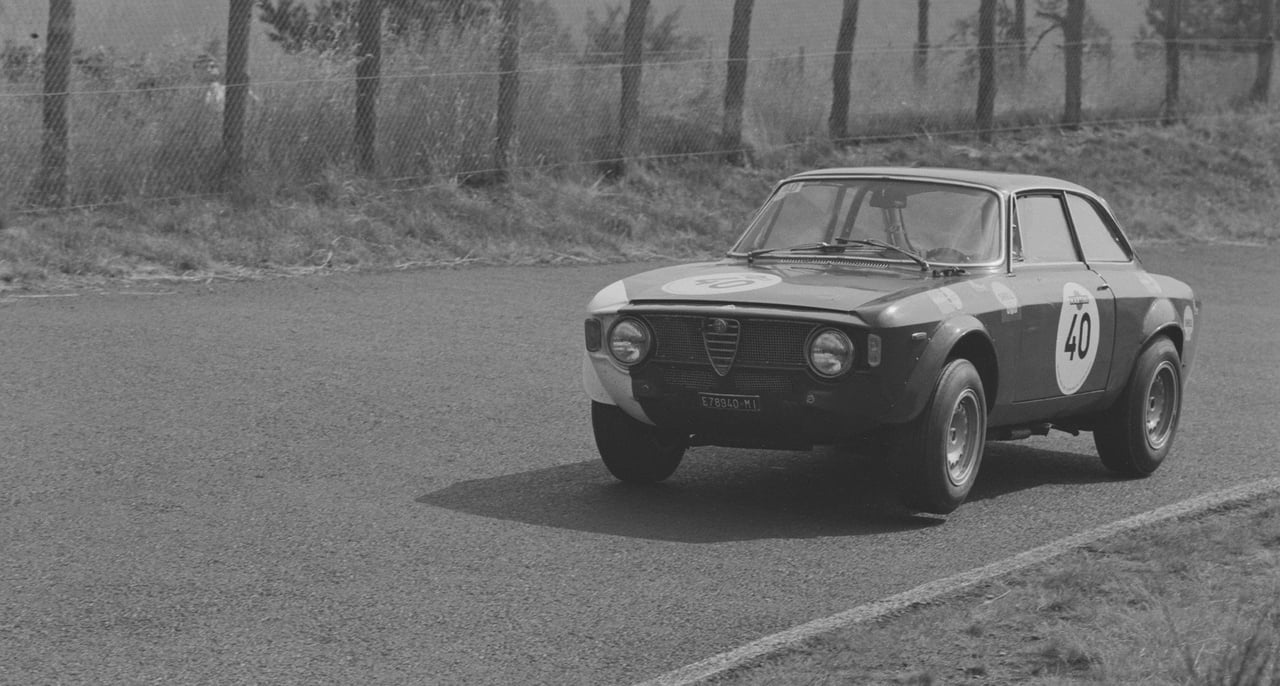
Which brings us to this car, chassis number AR613056, one of the ultra-rare works racing cars. However, this specific example belongs to an even more exclusive group as you’ll soon find out. First registered to Autodelta S.p.A. in Udine on February 25th 1966, this GTA wouldn’t see track action until 1968. However, 1968 also saw the introduction of a new class in the European Touring Car Championship, known as Group 5. Chiti immediately took notice of Group 5’s new regulations, which meant that a special supercharged version of the 1.6-litre four cylinder could be used. These cars were called GTA-SAs for ‘sovra alimentata’, meaning ‘supercharged' in Italian, and the records show that only around 6 ever competed, with AR613056 being one of them. The SA engines boasted a whopping 60 horsepower increase over the non-supercharged units, but that extra power came at the cost of an incredible thirst for fuel.
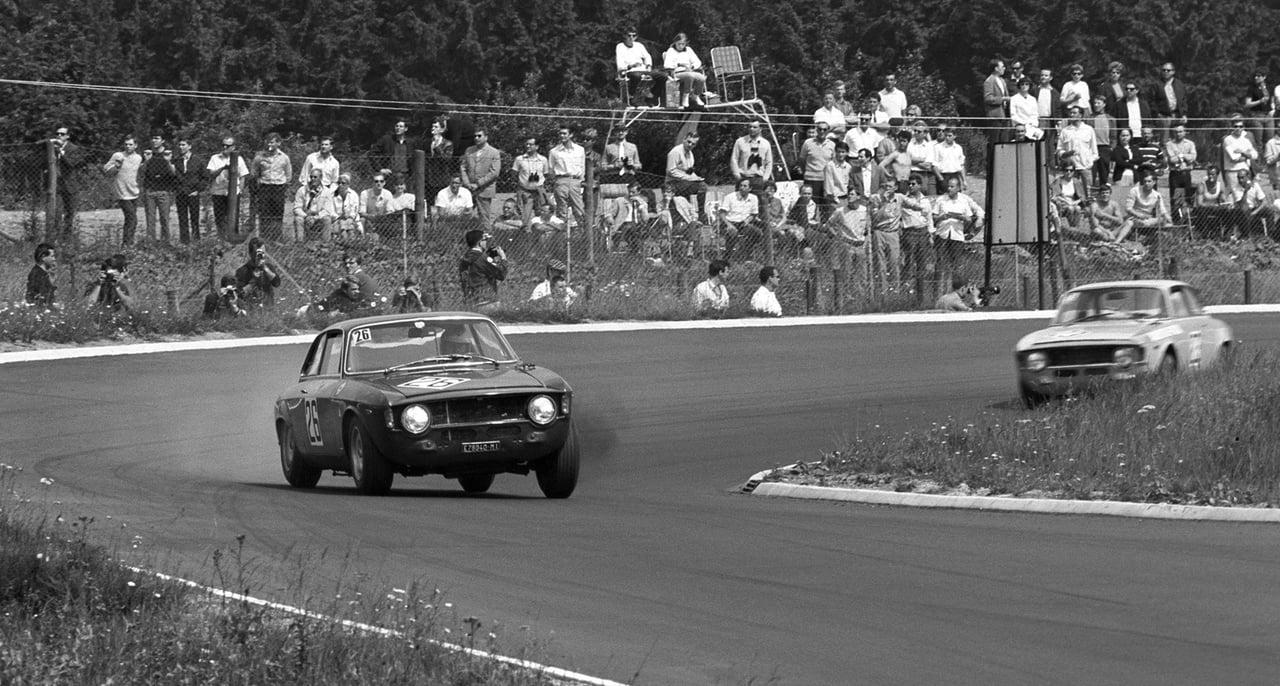
AR613056 raced with the supercharged engine at several events in 1968, among them the Nürburgring Six Hours, where it was piloted by Alfa’s works drivers, Lucien Bianchi, Nino Vaccarella, and Mario Casoni. All three drivers were at the top of their game: Vacarella was already a 24 Hours of Le Mans winner, while Bianchi won Le Mans just two months after racing in the little Alfa, and Casoni would also find the podium at Le Mans in 1972. The trio managed to achieve an impressive fifth place overall in their GTA-SA, but the endurance race proved that the SA’s increased speed couldn’t compensate for the car’s hefty fuel consumption.
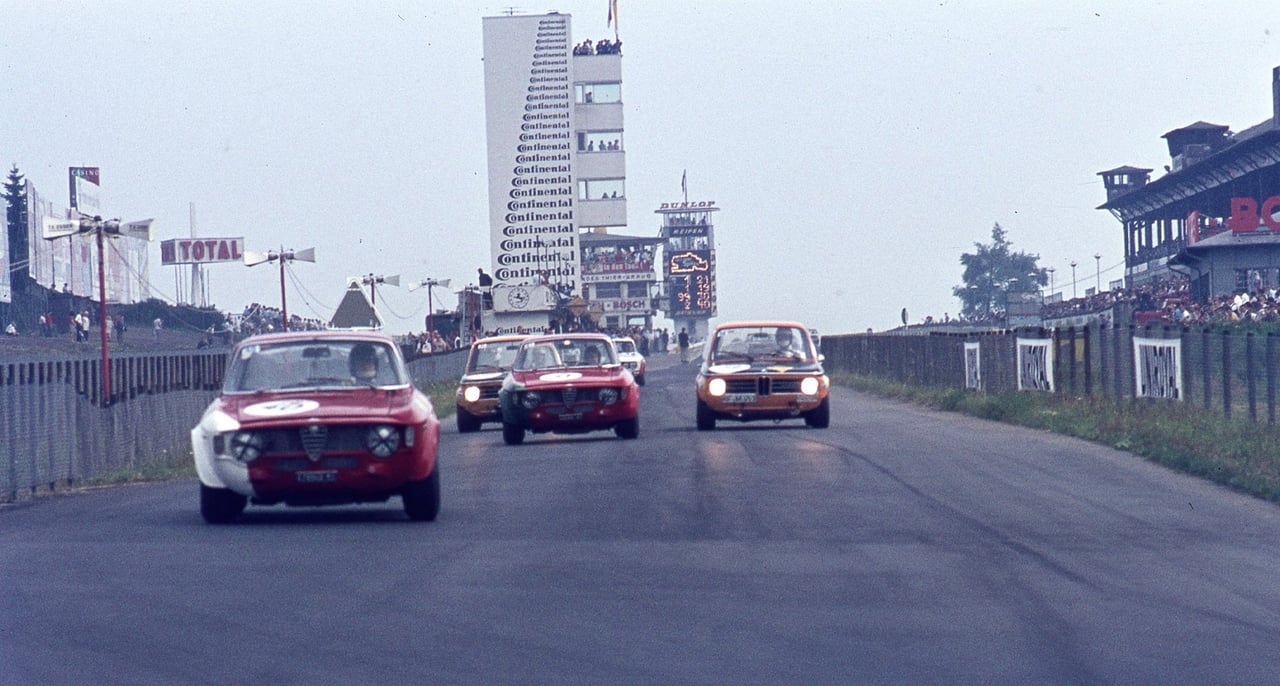
Sadly, the start of the 1969 season saw the abandonment of the supercharged engine, while AR613056 continued to race in three European Touring Car Championship events. Ignazio Giunti piloted this GTA to a first place finish in Group 2 at the Belgrade GP, while Andrea de Adamich and Spartaco Dini struck gold again at the Nürburgring Six Hours, taking home second overall and first place in Group 2. Thanks to these two wins, AR613056 helped secure the 1969 Constructor’s and Driver’s Championships for Alfa and Dini respectively. During its racing career, AR613056 wore the Milanese registration “MI E789401”, as seen while airborne at the Nürburgring’s Flugplatz, which remains with the car today.
Not only was this little Alfa successful in-period, but it would also go on to dominate historic motorsport. Following a race preparation by Alexander Furiani - the world’s foremost GTA specialist - AR613056 was driven to several overall victories in the Under Two Litre and the Master Touring Car Series. Additionally, the driver duo of Alex Furiani and Frank Stippler won the St. Mary’s Trophy at Goodwood Revival in 2013.
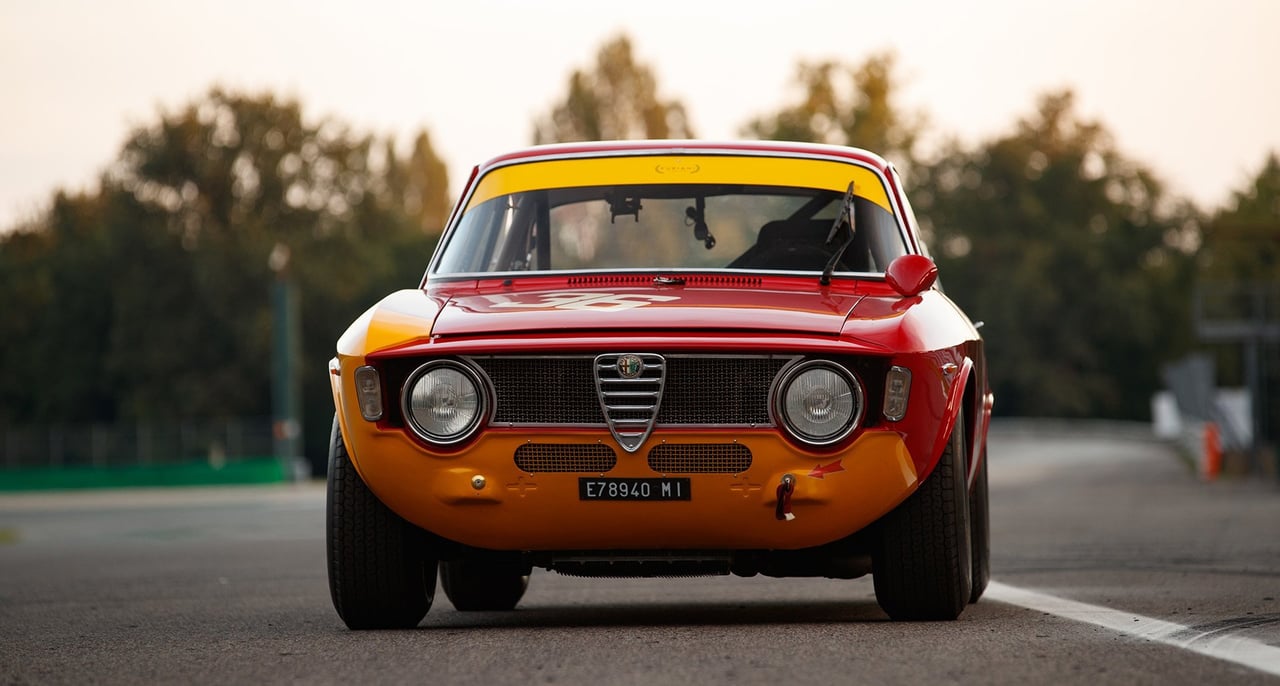
Always maintained regardless of cost, and accompanied by its original Italian libretto with complete known ownership history from new, AR613056 is one of the rarest and most desirable Alfa Romeo factory works race cars we’ve seen in a very long time. If this exceedingly rare 1965 Alfa Romeo Giulia Sprint GTA has caught your eye, then get in touch with Moritz Werner, and in the meantime, please enjoy this video of AR613056 battling around Goodwood Motor Circuit!
Images Courtesy of Moritz Werner via Archiv Dasse / Archiv Kraeling / Revs Institute / Wouter Melissen
